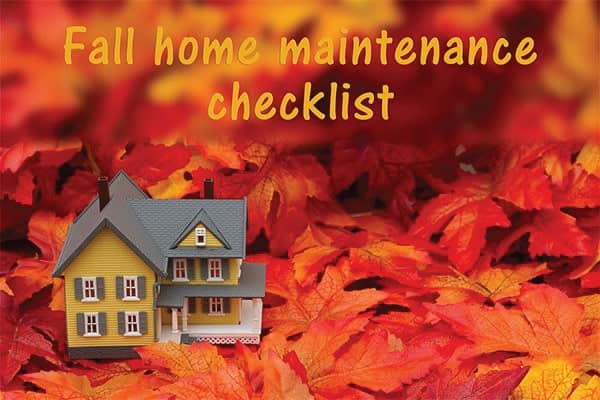As much as we hate to say it, summer is almost over. Where did the time go? That means fall and winter is on its way, shorter days, and colder weather. Fall brings rainy weather and moisture build-up in basements crawl space.
As a homeowner, it’s important to understand what annual fall maintenance your home requires, especially when it is related to wet fall weather. Keeping your basement or crawl space water-free this fall takes a bit of proactive home maintenance, but it can save you major repair costs down the line. From reducing pests to minimizing moisture build-up, these maintenance tips will help save you time, money, and major headaches this fall.
Here’s a list of some seasonal home maintenance tips to help protect your home against water damage.
Check Your Sump pumps
Check your sump pump backup battery or other alternate power sources. If your home is impacted by fall rain showers, a sump pump can help reduce flood damage and protect your basement from the moisture build-up that can attract pests and mold growth. But installing a sump pump isn’t enough to protect your home against flooding if you don’t ensure its backup power is working before an emergency occurs.
Make sure your Roof is in good Condition
Ensure your roof is ready for wet fall days and cold winter weather. Roofs are impacted by fall and winter storms, which may bring water, high winds, and heavy snow. Before weather-related home damages can occur, make sure your roof is in good condition for fall.
Clean your Gutters
Clean your home’s gutters, make sure the downspouts are pointed away from the home. If water pools around the exterior walls, it can easily seep inside and even damage your home’s foundation over time. Ensuring you keep up good gutter and downspout maintenance each year can help protect your home and its foundation against water damage in the fall and winter.
Landscaping and Grading
If the soil around the foundation doesn’t drain properly, it could cause serious foundation issues with time. Proper landscaping and grading are the first step toward preventing leaks into the foundation. Start by re-grading the soil around the foundation so it slopes away from the house. Use dense soil such as clay to prevent melted snow from accumulating near the foundation.
Plumbing and Leaky Pipes
Leaky pipes can cause water damage throughout a home, and standing water is an open invitation to pests and mold growth. Before the temperatures drop, ensure your home’s pipes are working well, any leaks are identified and fixed, and any standing water removed immediately. It’s also a good idea to insulate these pipes to prevent them from freezing and bursting when the weather turns cold
Winterize Outdoors and Hoses
Once you’ve winterized your garden and outdoor areas, it’s time to winterize your outdoor hoses as well. Before the temperature drops for winter, disconnect hoses, and drain the water inside. Turn off the water supply to outdoor faucets and leave the handle in an open position to release pressure. You can also install insulating covers over your hose bibbs.
Check your Windows
Take care of windows. Basement windows are easy to forget because they are small and set higher along the basement wall. However, they can be a major culprit for letting cold air into your home. Use plastic window film to cover them and keep the cold air at bay.
Check your HVAC system and Ducts
If there is exposed ductwork in your basement, make sure it’s dust free and then seal up joints, grooves, and leaks with aluminum tape. Before the temperatures drop too far this fall, it’s important to get your HVAC units ready for increased use. Schedule HVAC unit service before winter weather begins and to improve output, ensure that windows, doors, and around the HVAC unit are insulated. Reducing drafts throughout the home can help lower your energy bills and guard against water damage.
Waterproofing Solutions
We can’t stress enough how important waterproofing is to the health and dryness of your crawl space basement. From controlling moisture to preventing floods, there are many solutions that can create the perfect basement environment. Consider the following:
Interior drainage – These systems arrest water that enters the basement walls/floor and directs it to the sump pump.
Basement sump pump – Coupled with interior drains, a properly functioning sump pump ejects water that seeps through or gets inside through snow melts or flooding.
Dehumidifier – This unit dries out the basement air and prevents secondary moisture problems like wood rot, peeling wall paint, and mold growth.
Water damage can impact your home’s foundation as well. Schedule a free estimate from our trained specialists to ensure no cracks or leaks are identified. If foundation damages are discovered, fix them before temperatures change and winter weather can make the problem worse. For basements and crawl spaces, professional waterproofing can help reduce moisture build-up, minimize pests, and protect against rainy fall weather.
Call The Best BAM basements
Allow the basement crawl space experts at BAM Basements and Masons to help you. We are one of the most sought-after names when it comes to basement waterproofing in and around Des Moines. Our team has many years of experience and in-depth knowledge about keeping the basement free from moisture and humidity. Therefore, we can suggest the right method for your home.
All our basement waterproofing techniques come at bargain basement pricing, and we ensure the timely completion of each of the projects. To know more about basement waterproofing and get a free estimate, please feel free to call us!

